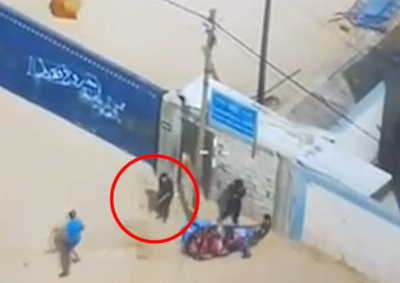"To his students, Ahmad al-Khatib was a deputy principal at an elementary school in Gaza run by the United Nations agency for Palestinian refugees. To Hamas’s military wing, documents say, he was something else entirely: an infantryman operating out of the southern Gaza city of Khan Younis.
The military wing, known as the Qassam Brigades, kept meticulous records of its fighters, tracking the weapons they were issued and regularly evaluating everything from their fitness to their loyalty.
Mr. al-Khatib, an employee of the U.N. agency since 2013, was among them: Secret internal Hamas documents shared with The New York Times by the Israeli government say that he held the rank of squad commander, was an expert in ground combat and had been given at least a dozen weapons, including a Kalashnikov and hand grenades.
The refugee agency, known as UNRWA, operated schools across Gaza before they were shuttered in the wake of Hamas’s Oct. 7 attack on Israel and the ensuing war. The agency, which employs roughly 13,000 people, including thousands in the schools, has a duty to maintain the neutrality of its facilities in the conflict zones in which it operates, including by keeping militants off its premises and payrolls.
But interviews and an analysis of the records shared with The Times by the Israeli military and foreign ministry indicate that Mr. al-Khatib was one of at least 24 people employed by UNRWA — in 24 different schools — who were members of Hamas or Islamic Jihad, another militant group. Before the war, the agency was responsible for a total of 288 schools, housed in 200 different building compounds, in Gaza.
A majority were top administrators at the schools — principals or deputy principals — and the rest were school counselors and teachers, the documents say. Almost all of the Hamas-linked educators, according to the records, were fighters in the Qassam Brigades...
Among the seized records are secret Hamas military plans that show that the Qassam Brigades regarded schools and other civilian facilities as ‘the best obstacles to protect the resistance’ in the group’s asymmetric war with Israel. The documents also list two schools in particular that were to be used as redoubts where fighters could hide and stash weapons in a conflict.
The Israeli government shared the documents at The Times’s request, after Israeli officials had circulated a list of 100 UNRWA workers it alleged were militants. The Times asked for documents specifically related to school employees, who, as a sizable subset of the agency’s employees, offer a window into the evidence behind Israel’s claims.
The seized records — coupled with interviews of current and former UNRWA employees, residents and former students in Gaza — offer the most detailed evidence yet of the extent of Hamas’s presence inside UNRWA schools. In several cases, educators remained employed by UNRWA even after Israel provided written warnings that they were militants.
The group’s presence in education appears to have extended beyond Gaza’s borders: In September, Hamas announced the death of its leader in Lebanon — a school principal and a former head of UNRWA’s teachers’ union in that country...
Residents of Gaza said in interviews that the idea that Hamas had operatives in UNRWA schools was an open secret. One educator on Israel’s list of 100 was regularly seen after hours in Hamas fatigues carrying a Kalashnikov...
In other instances, the agency did not fire Hamas operatives after tunnels were discovered under or adjacent to its schools.
In 2017, UNRWA discovered a tunnel that passed under the Maghazi Prep B Boys School in central Gaza. The agency said at the time that it had lodged a protest with Hamas over the tunnel and had moved to seal entrances.
Seized records say that the principal of the school, Khaled al-Masri, is a Hamas member who was issued an assault rifle and a handgun, and he is pictured standing in front of a Hamas banner on Facebook.
He remains on UNRWA’s staff, the agency says, but is under investigation for a social media violation..."
December 8, 2024
Records Seized by Israel Show Hamas Presence in U.N. Schools

Armed terrorists at an UNRWA site (Photo courtesy IDF Spokesperson's Unit)
Date
December 8, 2024
Title
Records Seized by Israel Show Hamas Presence in U.N. Schools, The New York Times
Author(s)
Jo Becker and Adam Rasgon
